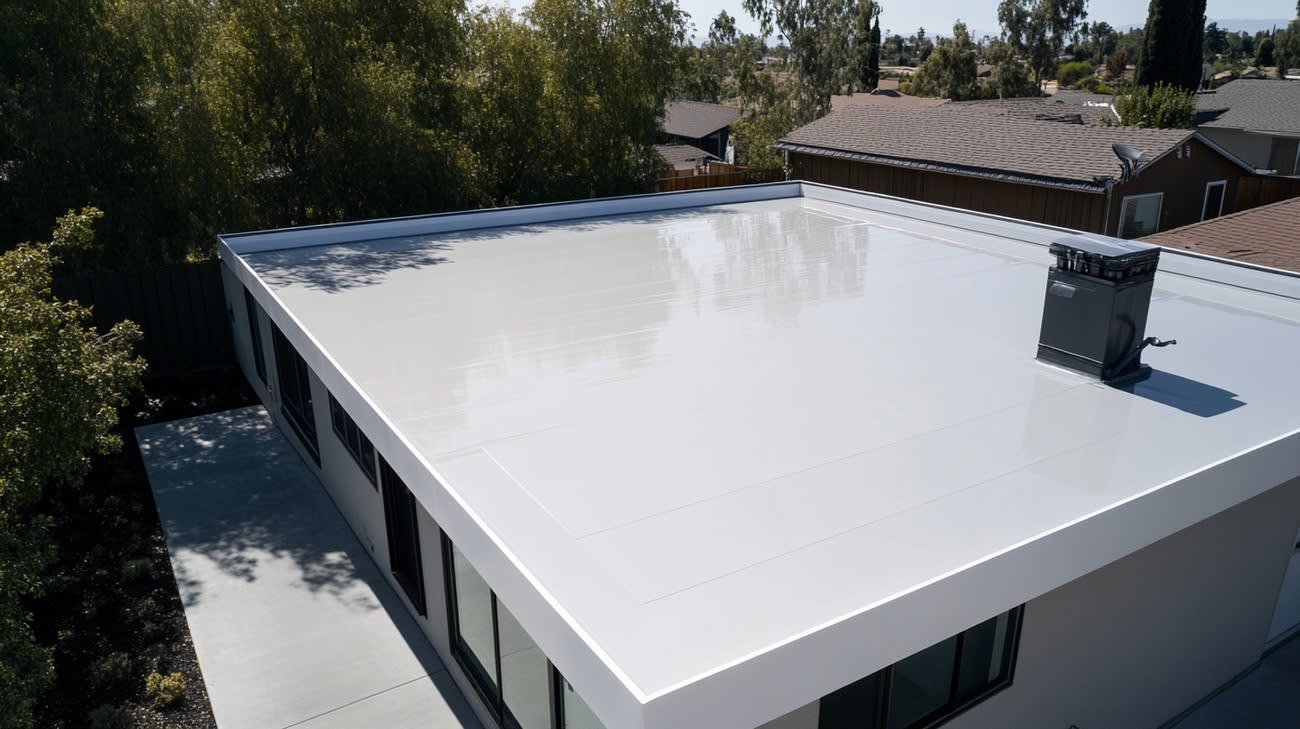
When protecting commercial buildings from the elements, selecting the right roofing system is crucial for long-term structural integrity and cost management. Professional roofers in Jacksonville frequently recommend membrane roofing solutions for flat or low-slope applications due to their exceptional performance characteristics. These specialized systems create a continuous, waterproof barrier that effectively shields buildings from moisture infiltration while offering superior durability to traditional roofing materials. Whether you’re constructing a new commercial facility or planning to replace an aging roof, understanding membrane roofing’s benefits, varieties, installation requirements, and maintenance needs can help you make an informed decision that aligns with your building’s specific requirements and budget constraints.
When considering roofing options, membrane roofing stands out for its exceptional durability and low maintenance requirements. Membrane roofing, whether made of EPDM, TPO, or PVC, provides a seamless, watertight barrier that protects your building from harsh weather conditions. This type of roofing is known for its resistance to UV radiation, punctures, and tears, ensuring a longer lifespan than traditional roofing materials. With proper installation by certified professionals, membrane roofing offers superior leak protection and can withstand extreme temperatures without deteriorating. Moreover, its reflective properties help reduce energy costs by keeping your building cooler in the summer. Investing in membrane roofing guarantees a long-lasting, cost-effective solution for your roofing needs.
What are the different types of membrane roofing available for your building’s needs? There are three primary types to take into account: Thermoplastic Olefin (TPO), Ethylene Propylene Diene Terpolymer (EPDM), and Polyvinyl Chloride (PVC). TPO membranes offer excellent UV resistance and flexibility, making them popular for various climates. EPDM membranes are known for their durability and resistance to extreme temperatures, making them suitable for harsh environments. PVC membranes provide excellent chemical resistance and fire-retardant properties, which are ideal for buildings with specific safety requirements. Each type has unique characteristics, so selecting the right membrane is essential to ensure long-lasting protection for your roof. Consider climate, building usage, and maintenance when choosing the most suitable membrane for your roofing project.
To guarantee a successful membrane roofing installation, meticulous preparation and precise execution are essential. Begin by ensuring the roof deck is clean, smooth, and free of debris that could impact the membrane’s adherence. Next, a suitable insulation layer will be installed to enhance energy efficiency and provide a stable base for the membrane. Carefully roll out the membrane, ensuring it is appropriately aligned and free of wrinkles or bubbles. Secure the membrane using manufacturer-recommended adhesives, fasteners, or heat-welding techniques, paying close attention to detail at seams and penetrations. Finally, a thorough inspection must be conducted to confirm the membrane is correctly installed and make any necessary adjustments before completing the process.
How do you ensure the longevity and performance of your membrane roofing system? Regular maintenance is key to maintaining your membrane roof in the best condition. Inspect the roof at least twice yearly, especially after severe weather, to catch any issues early. Keep the roof clean to prevent debris buildup that can lead to damage. Trim overhanging tree branches to avoid punctures or scratches on the membrane. Check for any signs of wear and tear, such as cracks, bubbles, or tears, and address them promptly. Ensure that trained professionals do any repairs to maintain the roofing system’s integrity. By staying proactive with maintenance, you can extend the lifespan of your membrane roof.
When comparing membrane roofing with traditional roofing materials, assessing their strengths and weaknesses is essential to make an informed decision for your roofing needs. Membrane roofing offers superior durability and flexibility to conventional materials like asphalt shingles or metal roofing. Membrane roofs are highly resistant to water, UV rays, and chemicals, making them ideal for flat or low-slope roofs. They provide excellent insulation and energy efficiency, reducing heating and cooling costs. However, traditional materials may be more cost-effective initially and offer a more traditional aesthetic appeal. Asphalt shingles are easy to install and repair, while metal roofing is known for longevity. Consider climate, budget, and desired lifespan when deciding between membrane roofing and traditional materials for your next roofing project.
Share :
Jacksonville
4600 Touchton Rd Building 100, Suite 150, Jacksonville, FL 32246, United States
Orlando
37 N Orange Ave #500, Orlando, FL 32801, United States
Tampa
5401 W Kennedy Blvd., Ste 100, Tampa, FL 33609
Venice
1101 Tamiami Trail S, Ste 100T, Venice, FL 34285
Monday – Friday: 9:00 AM – 5:00 PM
Saturday – Sunday: Closed
Subscribe to our newsletter for the latest updates and offers.